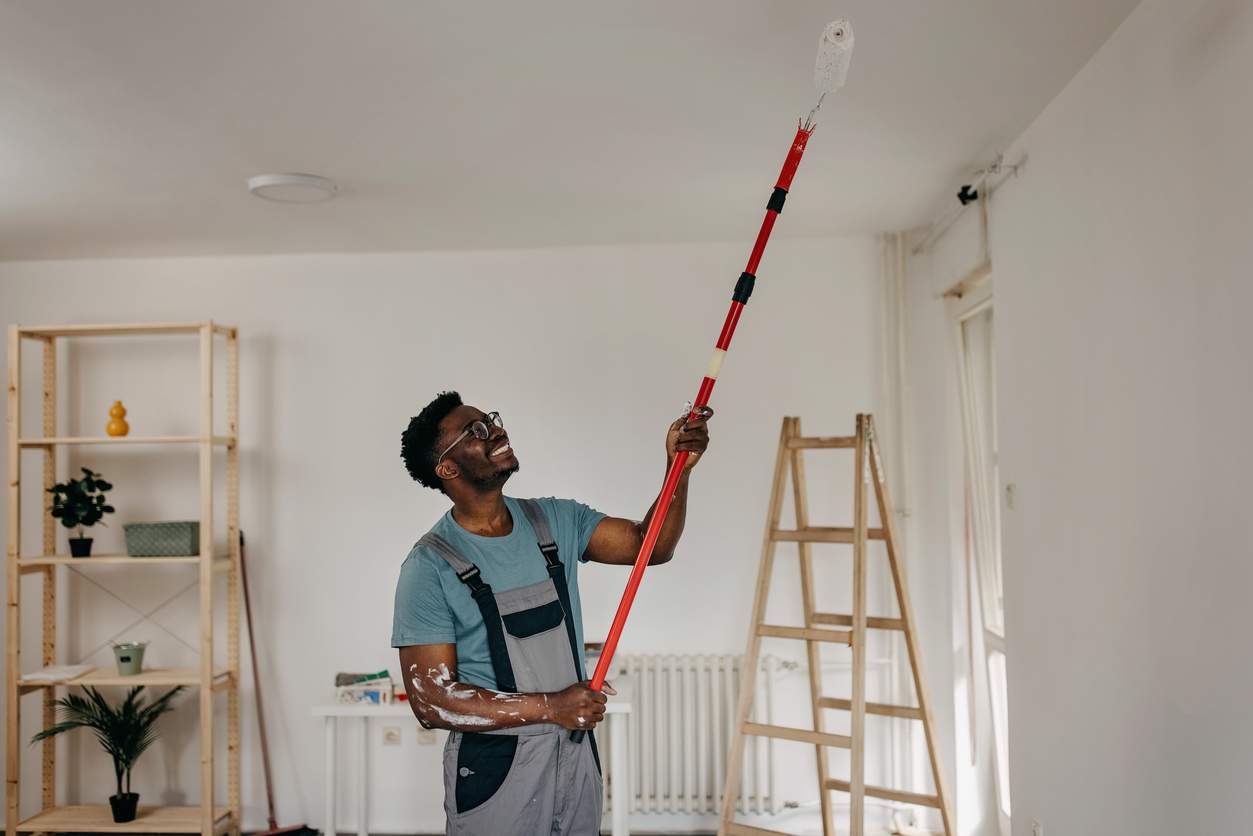
Elevate Your Space: Painting a Stunning Ceiling
Enhancing the aesthetics of your space goes beyond the walls; it involves paying attention to often overlooked areas like the ceiling. In this comprehensive guide, we’ll walk you through the steps to paint a ceiling, providing insights into color selection, preparation, and execution for a stunning and cohesive look.
Choosing the Right Ceiling Paint Color
The first step in painting a ceiling is selecting the right color. While white is a classic choice, consider experimenting with other shades to add personality to your space. Light colors can make a room feel more open, while dark tones can create a cozy atmosphere. Take into account the room’s purpose, lighting, and existing décor when choosing your ceiling color.
Preparing the Room for Painting
Before diving into painting, proper preparation is crucial. Clear the room of furniture or cover it with drop cloths to protect surfaces. Remove light fixtures or ceiling fans, and cover the floor with additional drop cloths. Ensure the walls are adequately protected to avoid accidental splatters. Repair any cracks or imperfections in the ceiling using spackle or joint compound.
Selecting the Right Paint and Tools
For ceiling painting, choose a high-quality ceiling paint that is specifically formulated for this purpose. Flat or matte finishes are common choices as they help hide imperfections. Invest in quality paintbrushes or rollers to ensure smooth and even application. Extension poles for rollers are handy for reaching high ceilings, minimizing the need for ladders.
Applying Primer for a Smooth Finish
While some ceiling paints come with built-in primers, applying a separate primer can enhance adhesion and provide a smoother finish. This is particularly important if you’re painting over a darker color or dealing with water stains. Use a high-quality primer suitable for ceilings and allow it to dry completely before applying the topcoat.
Choosing the Right Painting Technique
The right painting technique can make a significant difference in the final result. If you’re using a roller, create a “W” or “M” shape on the ceiling and then fill it in without lifting the roller. This technique ensures even coverage and minimizes streaks. For edges and corners, use a high-quality paintbrush for precision.
Working in Manageable Sections
To avoid fatigue and ensure consistent results, work in manageable sections. Divide the ceiling into smaller areas, approximately 4×4 feet, and complete each section before moving on to the next. This approach allows for better control over the paint application and ensures a more uniform finish.
Allowing Sufficient Drying Time
Proper drying time between coats is essential for achieving a flawless finish. Follow the manufacturer’s instructions for drying times, and resist the temptation to rush the process. Ventilate the room well to help speed up drying, and avoid touching the painted surface until it is completely dry.
Adding a Second Coat if Necessary
After the first coat has dried, assess the coverage. Depending on the color and the original ceiling color, you may need a second coat for optimal results. Apply the second coat using the same techniques as the first, ensuring consistency in color and coverage.
Cleaning Up and Inspecting the Result
Once the paint has dried and you’re satisfied with the coverage, carefully remove painter’s tape from edges and corners. Inspect the ceiling for any touch-ups or imperfections, and address them as needed. Clean your painting tools thoroughly, and return furniture and fixtures to their places once the ceiling is fully cured.
Explore Painting Supplies at FundYourPurpose.org
For a wide range of painting supplies and expert advice on elevating your space through ceiling painting, visit FundYourPurpose.org. Their specialists can guide you in choosing the right paint and tools for your project, ensuring a successful and visually appealing outcome. Transform your space with a freshly painted ceiling that adds depth and character to your home.









